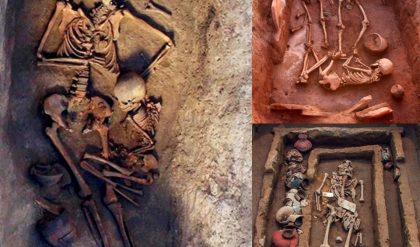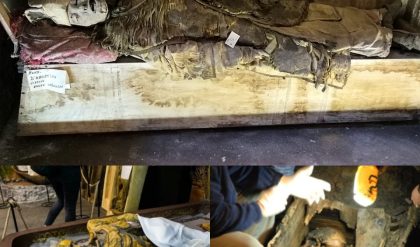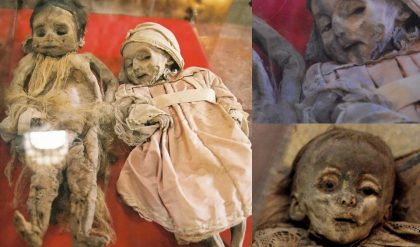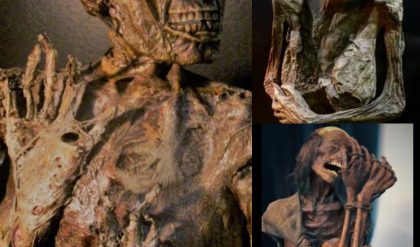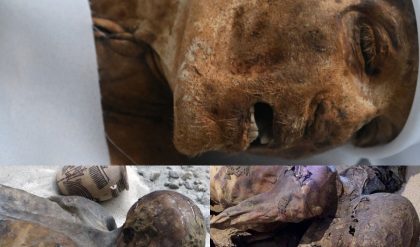Egypt on Saturday offered the first close-up look at a recently discovered city rich in artefacts that could reveal more about its pharaohs.
Zahi Hawass, Egyptologist and former antiquities minister, led the tour through the mudbrick ruins of the site in Luxor’s West Bank, whose discovery was announced on Thursday.
“The city is in the midst of three palaces to Aten, the ancient Egyptian deity, and I believe that workers in the city were supplying the palaces with valuable offerings to Aten, as well as daily items such as pots, jewellery and even food,” Mr Hawass said.
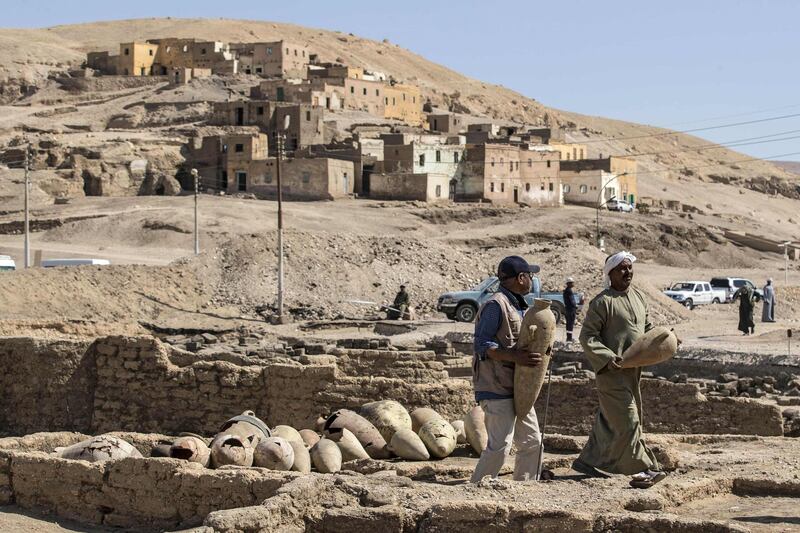


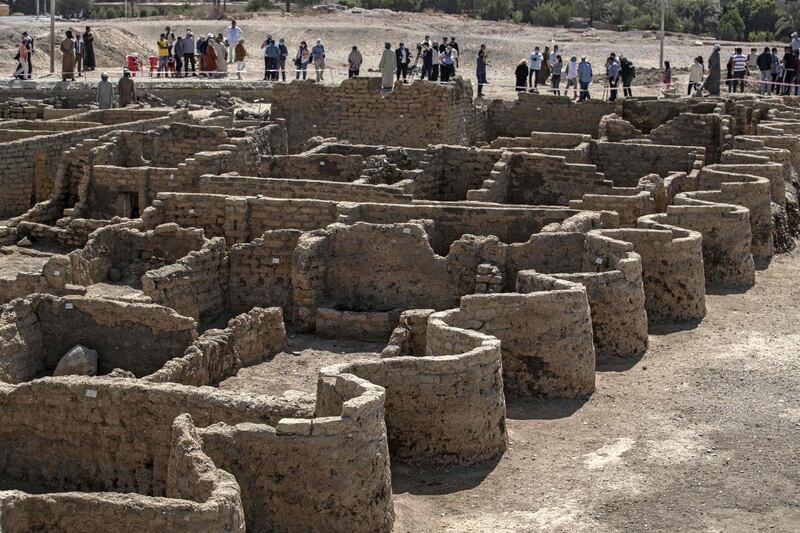



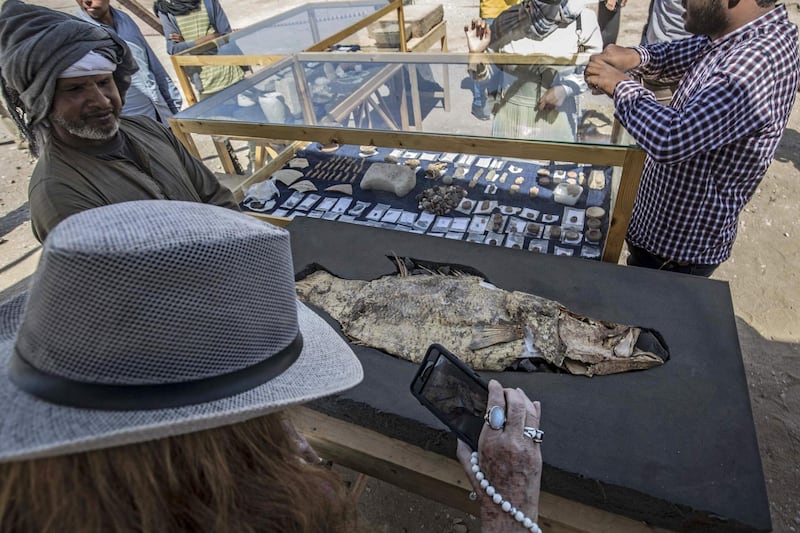

 Workers carrying pots found at the site of a 3,000 year old city near Luxor, Egypt, dating to the reign of Amenhotep III. AFP
Workers carrying pots found at the site of a 3,000 year old city near Luxor, Egypt, dating to the reign of Amenhotep III. AFPThe city is believed to be one of the area’s main administrative centres during the reign of 18th dynasty pharaoh Amenhotep III about 3,400 years ago.
The site was littered with artefacts bearing the seal of Aten, a deity during the New Kingdom, particularly during the reign of Amenhotep IV, the son of Amenhotep III who changed his name to Akhenaten.
Mr Hawass said the city was the largest ancient habitation to be discovered in Egypt, with only about a quarter of its area uncovered since excavation began after its discovery in September.
It borders Deir El Medina, an ancient Egyptian village that was home to the artisans who worked on the tombs in the Valley of the Kings during the 18th to 20th dynasties.
“I believe that Deir El Medina is actually a part of this larger city, but we will definitely find out more once the entire city is excavated,” Mr Hawass said.

Many well-preserved artefacts, including decorated pots, sandals, workmen’s tools and three mummies, were recovered.
There was also a number of jewellery items inlaid with precious and semi-precious stones, including lapus lazuli and amethyst.
Mr Hawass said one of the most unusual finds was the almost complete body of a fish coated in gold, which was discovered in one of the houses.
“We have only excavated 25 per cent of the city. It still extends north and west of here,” Mr Hawass said.
A workshop at the site has been working around the clock to restore the unearthed pots, many of which were found in fragments.
“First, we have to piece together the artefacts from shards of pottery that we find in one place. We wash the fragments with water and a colour fixer to preserve any drawings or inscriptions found on the piece,” said Khaled Mohamed, a restoration worker.
“We took out three mummies from the city. They were moderately well-preserved. We don’t have any reason to believe that they belonged to royals, but we will know more once more research is conducted.”
Ten metres from the dig site, unidentified pottery fragments were piled up to be sorted, catalogued and perhaps pieced together.
One of the most notable finds was a number of ovens believed to have been used to cook, dry and store meat.
“We found inscriptions in the city that revealed that dried meats were made and stored here for use by royals in nearby palaces and temples,” Mr Hawass said.
He said the finds would shed light on some of the 18th dynasty’s most important unanswered questions, particularly with regards to Nefertiti, the second wife of Akhenaten and stepmother to Tutankhamun.
A large number of the unearthed artefacts bore the insignia of Aten, proving that he was widely worshipped under the rule of Amenhotep III and not only during the reign of his son Akhenaten, who attempted to steer Egypt’s religious system into monotheism with Aten as its deity.
“Akhenaten abandoned this city after his father’s death and moved to Tell Al Amarna, but I believe that Tutankhamun returned to it after Akhenaten. The north and west sides of the city, which remain uncharted, might shed light on whether Nefertiti ever ruled as queen of Egypt,” Mr Hawass said.
“For the first time in Egypt’s history, we excavated statues of Queen Tiye.”
Mr Hawass said his team stumbled upon the city while searching for the mortuary temple of Tutankhamun, believed to be in the area.
He dismissed claims that the site had been found earlier and was only revealed now for
effect.
“If we had found this city before, why were its riches left untouched until today? We took out enough artefacts to fill a large storage room, some of which are surely the most important artefacts in ancient Egyptian history,” he said.
_________________

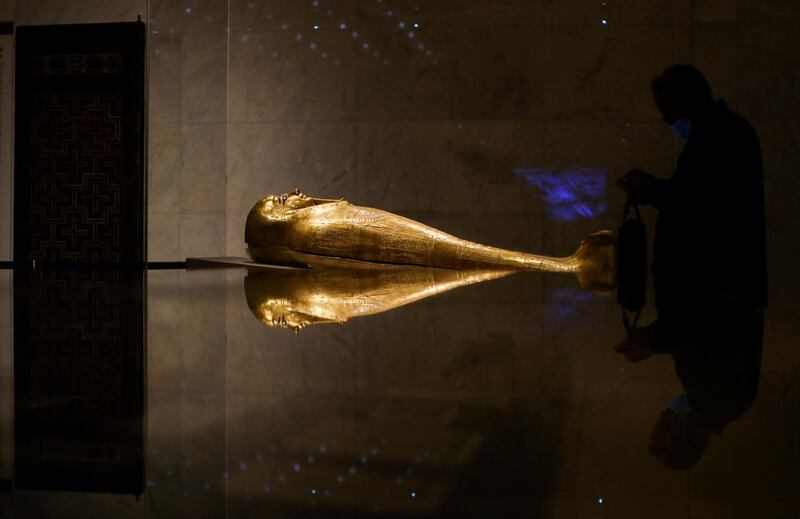



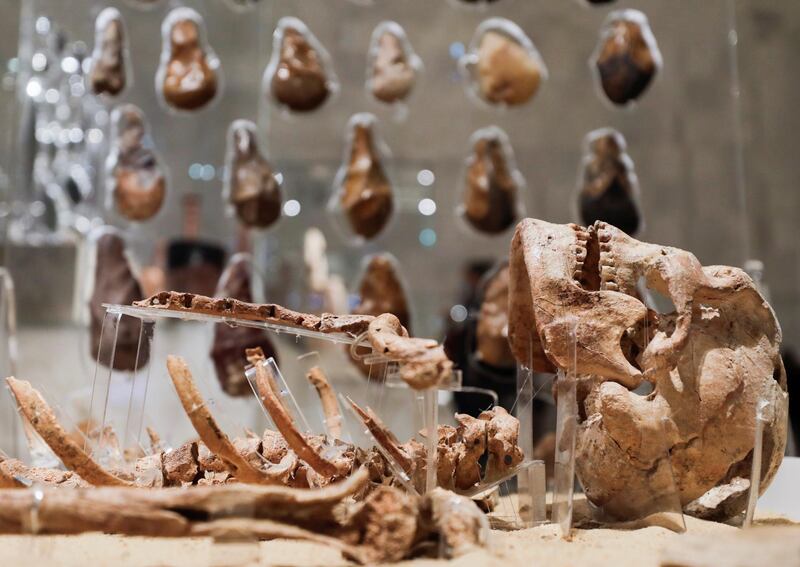


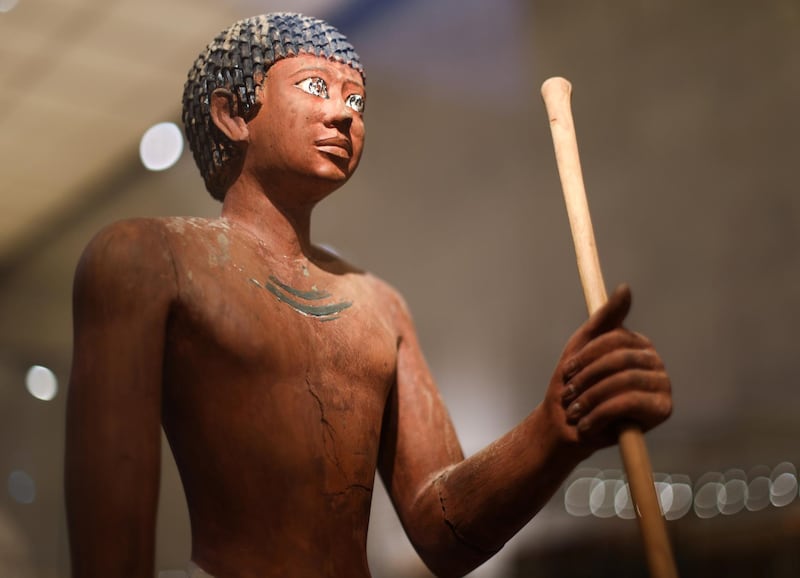
 The National Museum of Egyptian Civilisation in Cairo is now fully open to the public. Reuters
The National Museum of Egyptian Civilisation in Cairo is now fully open to the public. Reuters